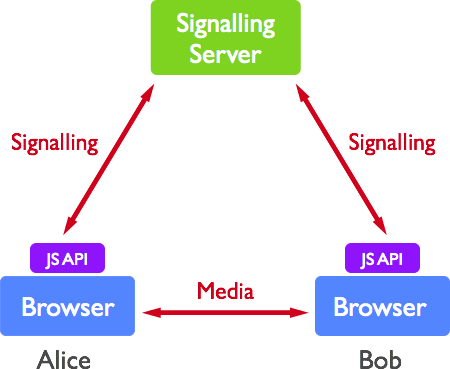What is WebRTC? A Deep Dive into Real-Time Web Communication
WebRTC – web real-time communication is compelling and powerful cutting edge technology. It’s plug-in free, can be used across desktop and mobile browsers and it is supported by major modern browsers. In
What is WebRTC?
WebRTC – standing for web real-time communication, is a free, open-source project that provides web browsers and mobile applications with real-time, peer-to-peer communication via simple application programming interfaces.
History of WebRTC
The idea of WebRTC has been developed since 2009 by a group of engineers who were responsible for Google Hangouts. At that time, to connect virtually and have video conferences and communications on the web, people have used Flash. Although Flash was very popular, the Google engineers didn’t want to continue using it. They wanted to build new technology of their own.
Till 2010, Google acquired On2, a video codec company that developed the VP codec series. Google open sourced all of On2’s assets. At the same time, Google also acquired GIPS (Global IP Solutions). The reason Google acquired both On2 and GIPS is that they would like to acquire the real-time data transfer technology and started to work on a standard for WebRTC.
May 2011, Google officially released an open source project for browser-based, real-time communication between browsers. This project was named WebRTC. During this time, W3C also published its first draft for WebRTC. Since then, Google and other major players in the web-browser market have been showing great support for WebRTC. November 2017, WebRTC version 1.0 is officially an announced feature completed by W3C. WebRTC next version is still in discussion.
Read more on:
Useful features of WebRTC
Open Source and Free
WebRTC delivers a standard-based, real-time audio and video communication that is free and available on all popular browsers. Developers can utilize WebRTC for both commercial and private use without extra commercial plug-ins and tools. Additionally, it cannot be denied that all developers love WebRTC because the technology itself is still evolving and futuristic.
Usability and flexibility
WebRTC offers simple solution to peer-to-peer communication directly between two browsers without any extra effort or further installment. Users have full control over media devices such as camera or microphone, access to advanced video-calling, screen-sharing, easily discover peers, open peer connections and start streaming.
Highly secure
WebRTC assures the data is secured throughout the transmission process. All WebRTC components remain in encrypted format such as always-on voice and video encryption. Also the fact that WebRTC requires no additional plug-in makes it safer and more prone to malware and hacker attack.
Supported by multiple browsers and mobile devices
There is no doubt that Chrome and Firefox are the two strongest supporting browsers for WebRTC.
Opera does support WebRTC but doesn’t allow screensharing.
Safari also supports WebRTC including simulcast and both VP8 and H.264. However, not all webRTC features work in Safari.
Both Android and iOS has support for WebRTC, nevertheless, iOS is trickier. Only Safary supports WebRTC on iOS, NOT any other browsers.
IE has a lot of limitations when it comes to WebRTC so let’s exclude IE.

WebRTC structure
The WebRTC structure is pretty simple. It is the combination of clients connecting with each other through server signalling.
Components of WebRTC include:
getUserMedia: access user’ s camera and microphonepeerConnection: send and receive images and voice datadataChannels: send and receive other data between browsers/ applications
How WebRTC is being used?
WebRTC shows the most convenience in peer-to -peer connecting and video calling directly on browsers without requirement for additional plug-ins or account register.
Skype for web, Facebook messenger also use WebRTC for this purpose.
WebRTC is also used in making video games. Just by combining with the use of WebGL specialized for graphic designing, game makers can already create relatively well made games.
At BHSoft, a Vietnam-based software development company, we also utilize WebRTC to create a peer-to-peer connecting platform right on browsers. With just an internet connection, you can easily make audio and video calls, whether one-on-one or in groups. You can freely and instantly send messages and have real-time conversations with your friends. Screen sharing is also available. All processes are 100% secure with industry-standard end-to-end encryption.
BHSoft aims to provide solutions for school environments where fast, convenient, and frequent interaction is essential. We also aim to offer this solution to firms and corporations that need their own intranet communication system for internal collaboration and conference meetings within the organization.
If you are interested in our solution, contact us at email address: hello@bachasoftware.com.

